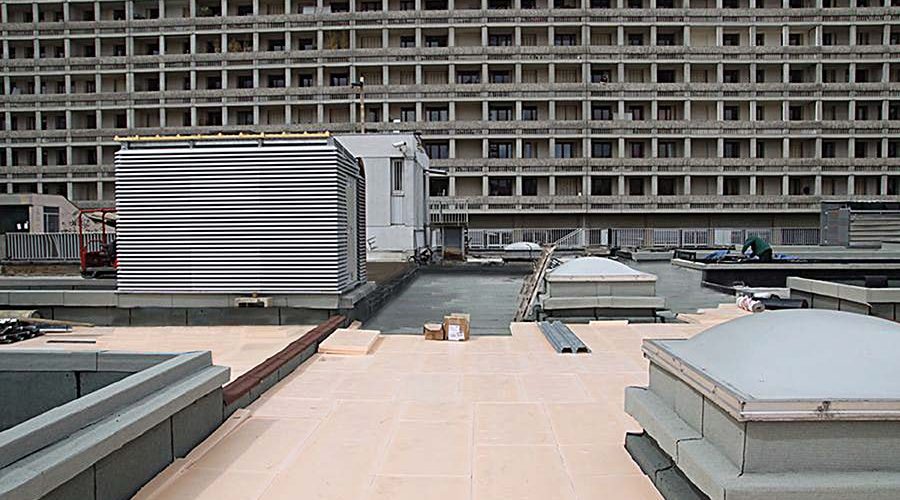Roland Jackson, Commercial Director of roofing, waterproofing and insulation specialist, Soprema, discusses the issue of plastics in the construction sector.
Soprema
Ever since the BBC’s Blue Planet programme first alerted the world to the amount of waste plastic in our oceans, there has been a drive to find ways to avoid the use of plastics, especially the single-use variety.
It’s an issue that the construction industry has taken very seriously and the public sector is increasingly looking to its supply chain for accountability on all environmental benchmarks, including plastics. While construction is the second largest user of plastics, it’s important to make a distinction between plastic consumption and plastic waste.
Single-use, non-recyclable plastics can significantly increase the environmental impact of a construction project but, with innovative product development, the
use of plastic-based materials can actually deliver environmental benefits.
Indeed, in some building products, the use of plastics not only helps to divert waste from landfill, but can also extend the service life of a building, thereby contributing to sustainability and reduced material use over time.
Service life and functionality
So how can plastic contribute to sustainability? Firstly it’s important to consider the durability of the product as this will determine how long it will last, how much maintenance it will require and how it contributes to building performance. When taking this approach to assessing the relative sustainability benefits of building products, it becomes clear that a non-plastic material requiring regular replacement generates waste across the raw material, manufacture and disposal cycle in a way that a robust plastic alternative does not.
Functionality is also important, and the performance of the material should be considered in the context of the building’s environmental footprint during both the build and operational phases. For example, Soprema’s XPS extruded polystyrene insulation board helps to enhance the thermal performance of a building, thereby reducing its energy demand.
Circular benefits
The other major factors in the environmental profile of plastics used in construction are the source of the material and the embedded carbon emissions associated with manufacture. The distinction between the use of virgin plastics and recycled plastics is just as important as the distinction between single-use plastics and plastic-based materials with an extended service life.
Once again, Soprema’s XPS insulation provides a good example of these principles in practice. The BREEAM A-rated extruded board is made from recycled plastic and manufactured using recycled CO2 technology. The product has a 60-year lifespan and is 100% recyclable at the end of its service life, demonstrating how existing materials can become a long-term resource.
Making the problem part of the solution
The world is already full of plastic; that genie escaped from the bottle decades ago. The goal now is to innovate in ways that address the problems of finite resources and pollution without vilifying a material that can contribute to reducing waste, improving building performance and delivering an extended service life.









